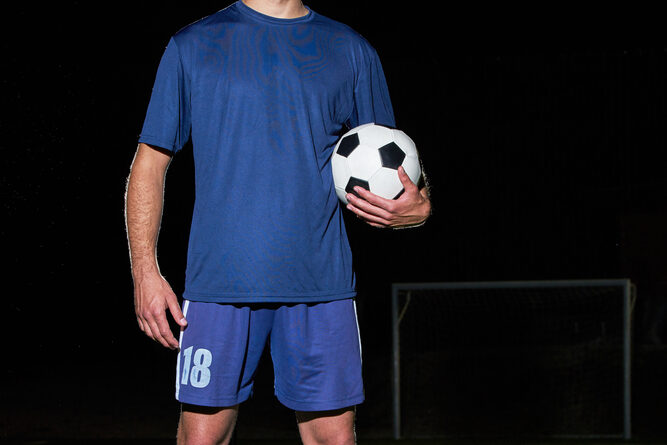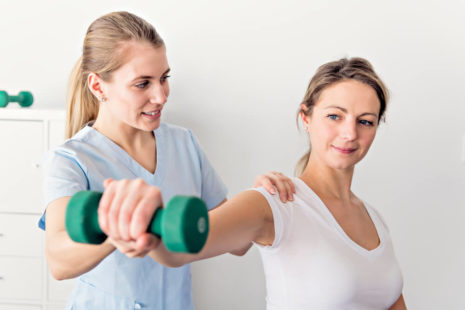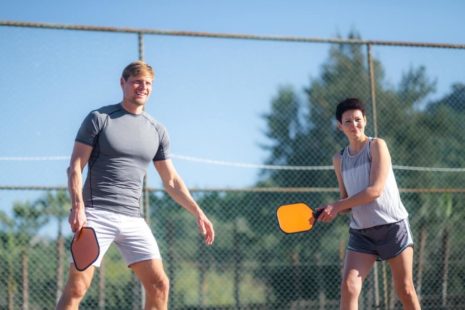Building a physique conducive to soccer requires a combination of strength, speed, agility, endurance, and flexibility.
Here’s how you can tailor your training to develop a soccer player physique…
- Strength Training – Incorporate resistance training exercises to build muscular strength and power, particularly in the lower body, core, and upper body. Focus on compound exercises such as squats, deadlifts, lunges, leg presses, bench presses, rows, and overhead presses to target multiple muscle groups simultaneously.
- Explosive Power – Soccer players need explosive power for sprinting, jumping, and changing direction quickly on the field. Include plyometric exercises such as box jumps, jump squats, bounding, and medicine ball throws to improve power output and athleticism.
- Speed and Agility Drills – Perform speed and agility drills to improve acceleration, deceleration, agility, and change of direction. Incorporate ladder drills, cone drills, shuttle runs, and sprint intervals to enhance footwork, quickness, and reaction time.
- Cardiovascular Conditioning – Soccer is a demanding sport that requires high levels of cardiovascular endurance. Include cardiovascular exercises such as running, cycling, swimming, and interval training to improve aerobic capacity, stamina, and overall fitness.
- Flexibility and Mobility – Maintain optimal flexibility and mobility to prevent injuries and enhance performance on the field. Incorporate dynamic stretching, foam rolling, and mobility exercises to improve joint range of motion, muscle flexibility, and tissue elasticity.
- Core Stability – Develop core strength and stability to improve balance, posture, and body control during soccer-specific movements. Include exercises such as planks, Russian twists, bicycle crunches, and stability ball exercises to strengthen the abdominals, obliques, and lower back muscles.
- Soccer-Specific Skills Training – Dedicate time to practicing soccer-specific skills such as dribbling, passing, shooting, and defending. Focus on technique, precision, and decision-making to improve your proficiency and effectiveness on the field.
- Recovery and Regeneration – Allow adequate time for rest, recovery, and regeneration between training sessions to prevent overtraining and promote muscle repair and growth. Prioritize sleep, hydration, nutrition, and active recovery strategies such as massage, foam rolling, and contrast baths to support optimal recovery and performance.
- Sport-Specific Conditioning – Mimic the physical demands of soccer by incorporating sport-specific conditioning drills and small-sided games into your training routine. Focus on high-intensity interval training (HIIT), small-sided games, and scrimmage drills to simulate game-like conditions and improve soccer-specific fitness.
- Consistency and Progression – Stay consistent with your training program and progressively overload your muscles and cardiovascular system over time to continue making gains in strength, speed, endurance, and overall fitness. Monitor your progress, adjust your training volume and intensity as needed, and stay committed to your goals to achieve a soccer player physique.
By incorporating these components into your training program and maintaining a balanced and disciplined approach to fitness, you can develop a physique that is well-suited for the physical demands of soccer and enhance your performance on the field.




